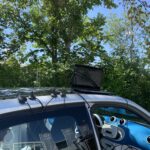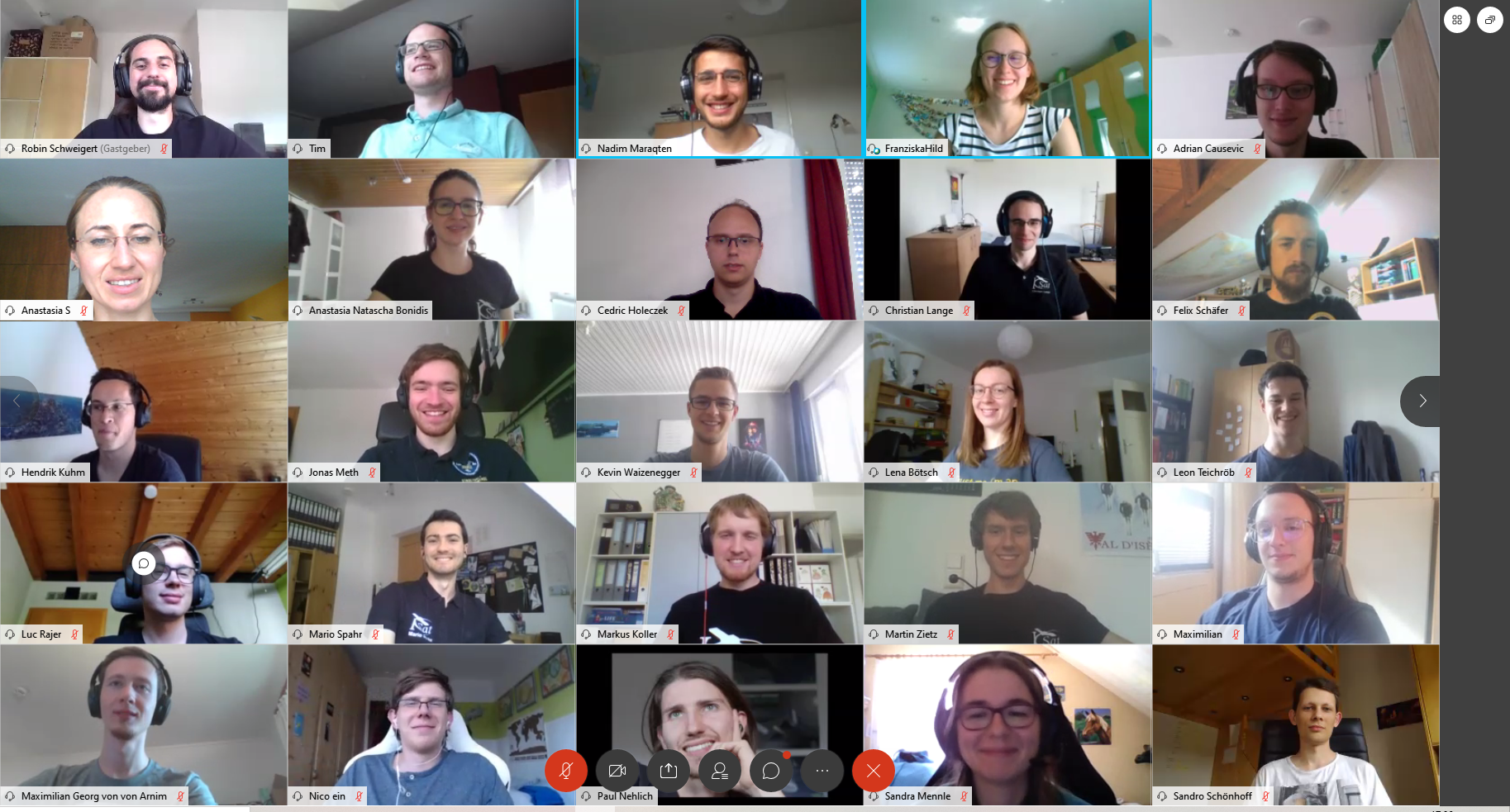Category: news-en
Newsletter 2021
SOURCE Completes Critical Design Review
BUBBLE 2 successfully launched!
On June 17, 2021, the long-awaited day had come, BUBBLE 2 could finally launch after a year’s delay due to Corona!
30°C outside temperature in Stuttgart and the team gathered, with negative Corona tests, at the university in Vaihingen to do the last preparations for the balloon launch. Changing batteries, preparing the ropes, gondola and parachute and to finish setting up the ground station. In the process, the software from the mobile ground stations still had to be set up on enough laptops so that tracking of the balloon was possible in each of the three tracking cars.
Around 12:30 the preparations were finished, all things were packed and the gondola and the helium were brought to the launch site. There the team set up a pavilion for some protection from the sun and started to assemble the gondola and check all the functions. At the same time, the balloon was filled. Shortly before 4 pm everything was ready and BUBBLE 2 was launched.
A flight time of roughly 3 hours was calculated with an approximate landing site north of Bretten. On a windless day the balloon does not fly too far away, which makes the chase more comfortable, so there was enough time for cleaning up, filling the water bottles and eating an ice cream before setting out. Using the tracking systems integrated in the gondola, the position of BUBBLE 2 could now be pinpointed and the flight route followed. Both the mobile and stationary ground stations were able to receive good data. At an altitude of almost 36km, the balloon burst and the gondola fell in free fall until the parachute was able to brake in the denser atmosphere. BUBBLE 2 glided gently to the ground at 5 m/s for the last few kilometers. The cars drove to the approximate landing site from different directions to increase the chance of recovering the gondola quickly. This is important if, for example, there is a river nearby to be able to rescue the systems in time.
All three chase cars had gathered near the expected landing site shortly before the landing and one of them could even watch the gondola descending. It was an unspectacular landing in the field, far away from roads and towns and during recovery no damage to the gondola or electronics could be detected. So it was a successful flight.
The entire flight was filmed by our GoPro, provides stunning footage and can be viewed in full on Youtube.
The data evaluation now also brings BUBBLE 3 a lot further, as we now know which of our systems worked well and where there are still weak points. Our goal to develop a plug-and-play system for high-altitude balloons, has come a lot closer this day!

BUBBLE 2 gondola is being prepared for launch 
test of the ground stations 
with the water canister the lift is measured 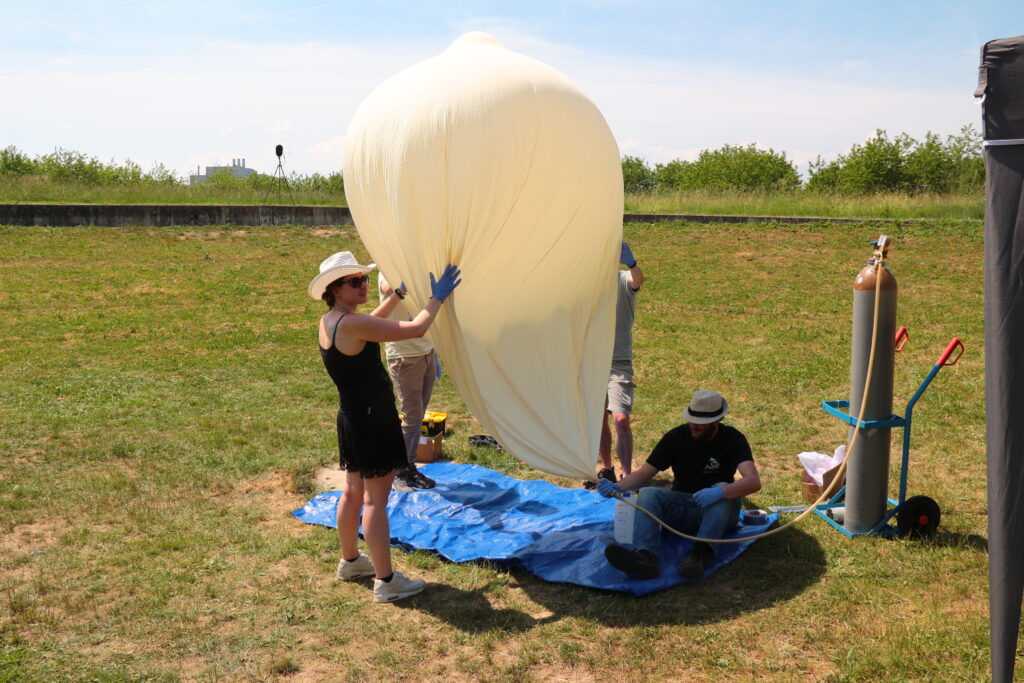
balloon being filled with helium 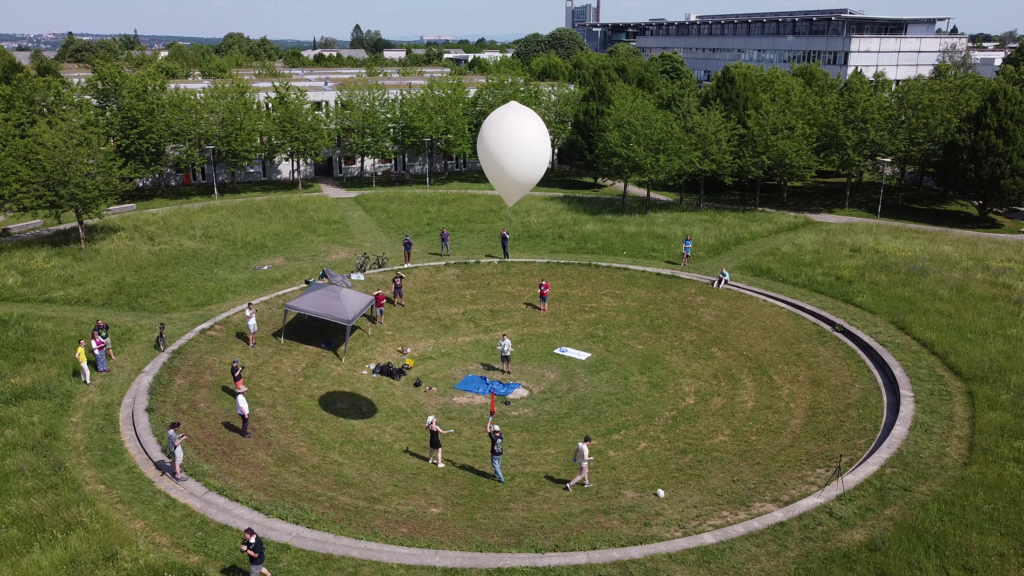
liftoff 
balloon with parachute, gondola and radiosonde 
shortly after liftoff 
Campus Vaihingen 
Stuttgart, Vaihingen and the airport 
Autobahn intersection Stuttgart and Böblingen/Sindelfingen 
airplane 
condensation trail of the airplane 
Stuttgart from ca. 15 km altitude 
the river Neckar and the city of Heilbronn 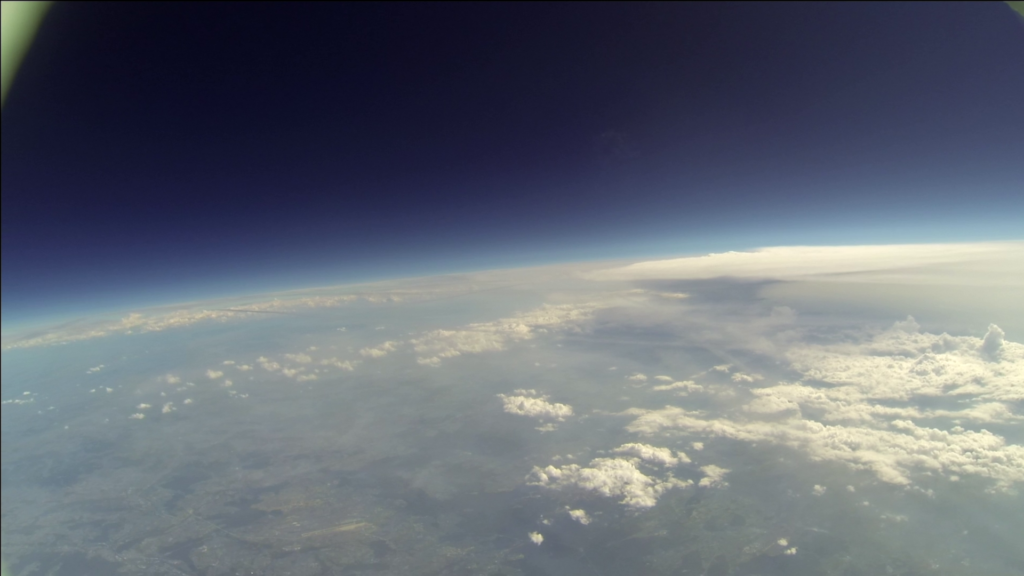
thunderstorm during ascent 
shortly before the burst of the balloon at 35 km altitude 
balloon bursts at 36 km altitude 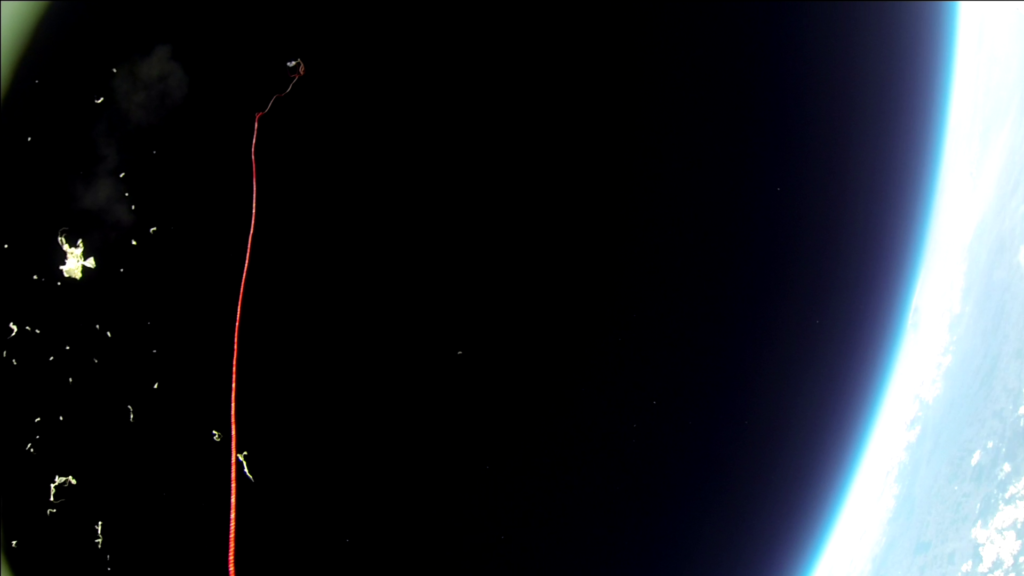
radiosonde at the end of the red rope 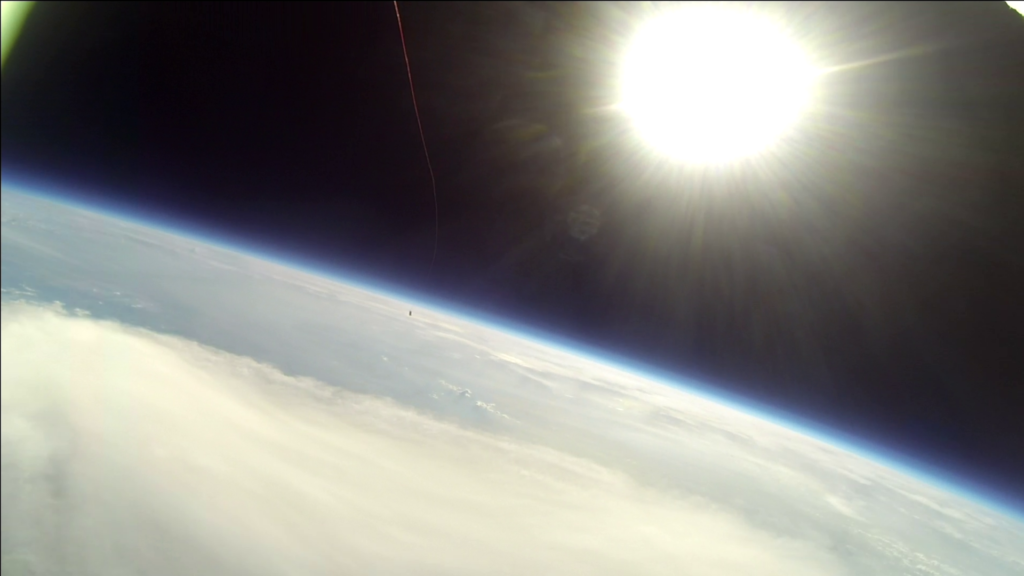
gondola and radiosonde in free fall 
thunderstorm during descent 
a few minutes before touchdown 
visual contact to a chase car 
shortly before touchdown 
touchdown in a field 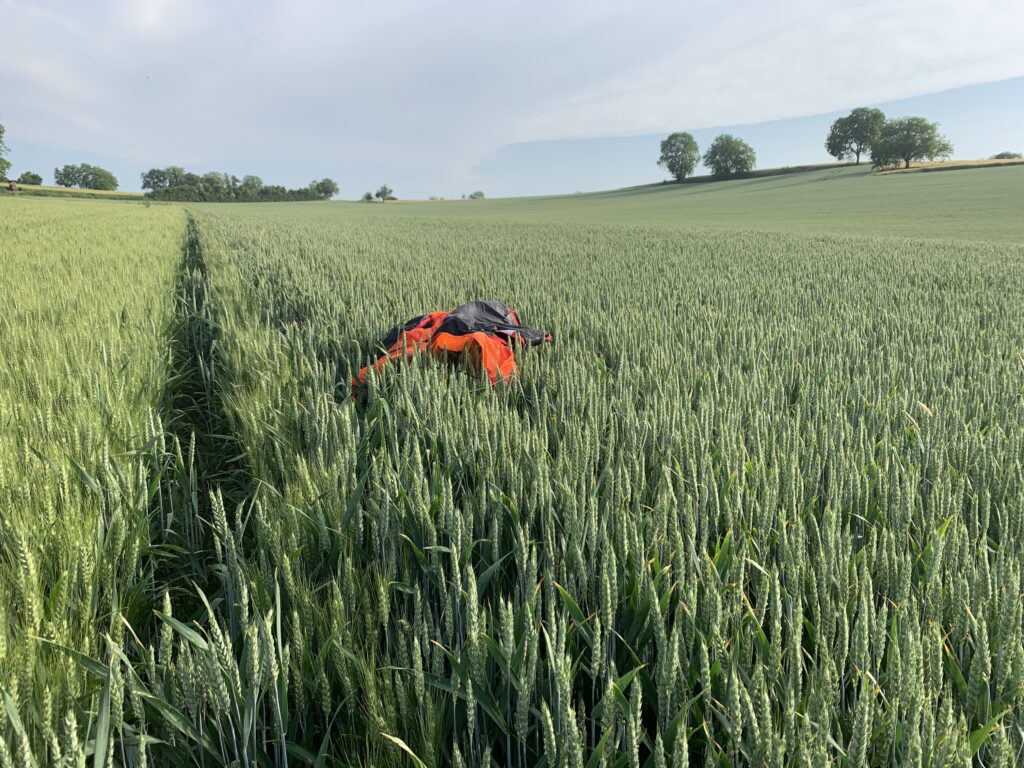
parachute in the field 
successful recovery 
gondola after successful flight 
the BUBBLE team after successful recovery
BUBBLE 2 successfully performed its system test – ready for launch!
As temperatures are rising, and winter winds are finally gone, BUBBLE 2 has successfully performed its system test – a critical milestone in the launch preparations. During the 2.5 hour long test run, every functionality such as a strong radio down link connection, battery performance and reliable data recording was tested, and no issues were found. Additionally, the team took the opportunity to work on final launch preparations. A final launch date is yet to be chosen and will be selected quite spontaneous as the launch is dependent on good weather and a promising flight track prediction – however, the team is looking for a launch in June 2021.
BUBBLE is the very own high-altitude program and balloon of the Small Satellite Student Society of the University of Stuttgart. BUBBLE 2 is, similar to the flight of BUBBLE 1, equipped with a sky brightness sensor which is an experiment performed in cooperation with the Institute of Space Systems at the University of Stuttgart. The high altitude balloon will lift a 2 kg gondola carrying the experiment to a maximum altitude of approximately 35,000 m where the balloon will burst and the gondola starts to descend safely on a parachute. The BUBBLE team on the ground will receive radio transmissions from the balloon to localize and recover the gondola after landing.
BUBBLE Team Practices Tracking & Recovery
KSat wins NASA-Challenge
KSat Stuttgart e.V. has successfully participated with its sensor MICU (Mineral Investigation Camera using Ultra-violet) in the NASA competition “Honey, I Shrunk the NASA Payload”. The competitions task was to propose payloads for a future moon rover of NASA. The proposals were evaluated in several categories and a total of 14 prizes were awarded.
With our proposal KSat reached second place in the category “Lunar Resource Potential” and won a prize money of 15.000$.
links
Annual General Meeting Held Online for the First Time
Internal Critical Design Review of the SOURCE Project
On 8th June 2020, the internal Critical Design Review (CDR) of SOURCE took place. Unlike usual, it was not held on site at the Institute of Space Systems at the University of Stuttgart (IRS), but via online presentation.
The aim of the day was to complete project phase C, during which the final design of the satellite was established. In addition to a project milestone for SOURCE, the review represented a study achievement at the end of the semester for all participants in the key qualification offered. The date of the review was delayed due to the corona regulations and the impact on the University of Stuttgart.
In addition to the reviewers who came from OHB and Airbus as well as from DLR Bremen, TU Berlin, DHBW Ravensburg, OBSPM (Observatiore de Paris) and Baylor University, the SOURCE team also welcomed numerous guests, including the ESA Education Office and students from the other Fly YourSatellite! participants.
The review started with the presentation of all subsystems and further information from the system engineers and the team management. Within about two hours, the current status of work on the entire satellite system was presented. In the afternoon, reviewers had time to ask questions and discuss the presentation.
In the end, the review board members voted to issue a conditional pass as a result. A detailed, written report will be compiled soon.
It is now necessary to close all RIDs (review item discrepancies, ambiguities or errors in concept, plan or documentation) up to the beginning of the CDR in the Fly Your Satellite! programme in order to pass it as directly as possible. Since SOURCE has been running for two years now, but has only been part of the Fly Your Satellite! programme of the ESA Education Office since February 2020, this internal review took place ahead of the CDR in the Fly Your Satellite! programme, which will follow in September.
The SOURCE team thanks all guests and especially the reviewers for the interest and commitment with which they made the CDR of SOURCE possible.
The SOURCE project is carried out with the support of the Education Office of the European Space Agency, under the educational Fly Your Satellite! Programme.
Further information
- KSat Stuttgart – https://www.ksat-stuttgart.de/en/
- Intitute of Space Systems – https://www.irs.uni-stuttgart.de/institut/
- Fly Your Satellite! – https://www.esa.int/Education/CubeSats_-_Fly_Your_Satellite
Corona and the impact on KSat projects
The corona virus currently leads to massive restrictions in public life in Germany and Europe. The University of Stuttgart will close down almost completely until 20 April 2020, which will delay some of our projects, which we summarize below.
This article will be updated if there are further changes.
Update 2020-03-19: Currently all meetings of clubs are prohibited in Germany. We are taking the opportunity to expand our server infrastructure with voice chat and other teleworking services.
ROACH2
Our rover mission was to be launched in March on board a REXUS rocket. The launch was postponed indefinitely in order to ensure satellite operation at the launch pad and as no medical care could be provided locally. REXUS/BEXUS and the organisers DLR and SNSA are looking for an alternative date.
SOURCE
Our CubeSat project is currently in phase C. Due to the closure of workshops and laboratories at the university there are some delays in production and tests.
Some work, especially software development and documentation is actually progressing faster now, as team members have much less other obligations. The schedule will not be changed for the time being.
The Critical Design Review was scheduled for April 20. Since this is now announced as the first day of lectures we are looking for a new date – and in case the shut down will be extended a good solution for a remote review.
BUBBLE2
The second balloon in our BUBBLE balloon series was scheduled to launch in April. As there are no production and launch preparations possible at the moment, the schedule will not be able to be kept. As soon as university operations are resumed, we will look for a new launch date.
CANSAT-CHALLENGE
Our CanSat-Challenge is running and nearing the end. Since no production and launch preparations are possible at present, the schedule will not be able to be kept. As soon as university operations are resumed, we will look for a new launch date.
KSAT-PR – WE AT EVENTS
Hannover Messe
The fair has been postponed by the organizer to 13 – 17 July 2020.
Yuri’s Night Stuttgart
The Yuri’s Night 2020 was cancelled by the organizer.
Tag der Wissenschaft
The Science Day was cancelled by the organizer.
PiAndMore 12 ½
The PiAndMore 12 ½ has been postponed, a new date has not been fixed yet.
Update 2020-03-24
Website
The website has been updated and improved in many places in the last few days. Now no external media and scripts are included and no cookies are set anymore.
This also means that there is no longer a notification to accept cookies. If you still have an old cookie: It will expire at some point and disappear. And you only have it, if you agreed to cookies in the first place.













